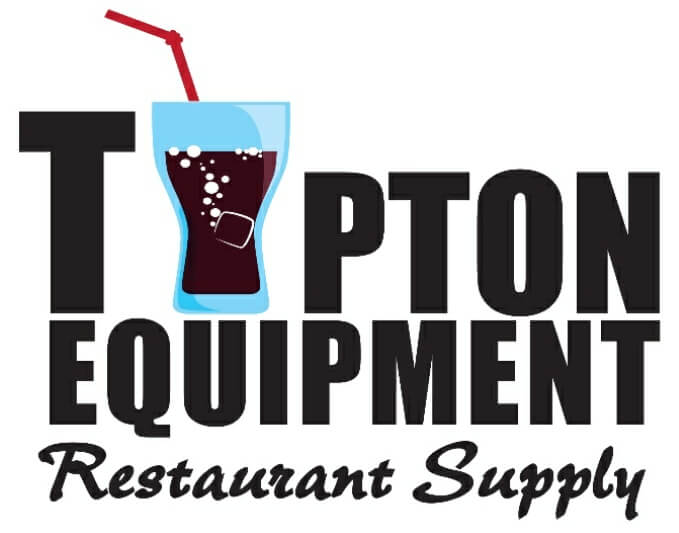It’s a Roast: What’s Wrong With The Honeymooner’s Kitchen?
May 1, 2019Welcome to our new series, “Roast and Toast”! Each month we’ll feature one kitchen that we love and one that… well, could use improvements.
The kitchens we feature can come from anywhere – TV, films, popular culture, you name it. We’ll talk about what we love and what we don’t like so much.
This month’s roast is the kitchen from Honeymooners. Alice was somehow able to keep Ralph well-fed despite a few kitchen supplies in one of the worst kitchens we’ve seen. (As an aside, did you know that Alice and Ralph were the inspiration for Fred and Wilma Flintstone?)
Here’s what we’d roast about that kitchen!
A Complete Lack of Kitchen Supplies
I think the size – or lack of it – is the first thing I notice here. I mean, there was one small sink, a two-burner stove, and a tiny icebox crammed into one corner of a room.
There’s no counters. There’s no cupboards. There’s absolutely no place to put any kitchen supplies whatsoever. In fact, I think that kitchen table is larger than any space she has to cook.
The kitchens lack of size and space certainly was representative of most kitchens in the 1950’s, but it was intended to show a more gritty and unfiltered way of life. Perhaps that’s why poor Alice had to work in one of the worst kitchens to ever hit TV.
Violates the Proper Work Triangle
What’s the “work triangle” in a kitchen? It’s the concept that connects the three primary work areas of a kitchen, which are the stove, sink, and refrigerator. These areas should be between four and nine feet apart, with the total distance adding up to between 13 and 26 feet.
If the work triangle is too small, you’ll feel cramped and have a very hard time getting your cooking done. If it’s too large, you’ll have to walk around a lot to get your supplies and the whole cooking process will be a hassle.
Obviously, Alice doesn’t have a triangle. All she really has is a cramped corner. All three of her work areas are next to each other and there’s barely room to breathe, much less work effectively.
It’s Missing Key Safety Standards
OK, I get that no one is calling the housing authority about fictional kitchens, but that poor kitchen is a disaster waiting to happen.
It’s not just that there’s no space for kitchen supplies. It’s that the whole setup is unsafe. Not having cabinets between appliances is inconvenient and dangerous. You also need to have countertops on either side of a stove to avoid someone getting burned on the hot range.
There’s no way that kitchen would pass any kind of inspection. In real life, you’d have a fire or burn before you can say, “BANG! ZOOM! Straight to the moon!”
Ready to Outfit Your Home Kitchen?
It’s great that none of us have to deal with the type of tiny kitchen that poor Alice did on the Honeymooners. But do you have all the kitchen supplies you need?
In today’s modern world, there are all kinds of smallwares and neat cooking equipment you can use. If you’d like to get some at a great price, Tipton Equipment can help. Contact us for a quote to see what we can do for you today!
5 Things Every Restaurant Owner Should Do Before Buying Used Kitchen Equipment
Equipping your restaurant properly can cost a lot of money, so buying used kitchen equipment is the go-to choice for many restaurateurs. Buying used kitchen equipment for a restaurant is a bit different than buying used equipment for your home, however. You will...
Pulping and Grinding: A Starter’s Guide to Reducing Commercial Food Waste Costs
For most restaurant owners and managers, the expenses involved in making meals are always under careful consideration. Water is needed to prepare, cook and wash food; power is necessary for food prep, cooking and cooling, and so on. However, how many of us consider...
Are High Speed Ovens Too Good to be True?
You might have heard a few of the bold claims that foodservice equipment manufacturers have been making about high speed ovens, but they can’t be possible, right? Cooking three times as faster as regular ovens? Five times as fast? Fifteen times as fast? It may seem...
How to Eliminate Excess Condensation in Your Kitchen
Is your commercial kitchen getting steamy? If so, you could have more than just an uncomfortable working environment on your hands. Excess moisture in your commercial kitchen can result in the corrosion of equipment, the development of mold, and even damage to your...
Pest Preventions to Implement in Your Commercial Kitchen
Restaurant pests: it’s something that few people want to think about. Like it or not, pest management is an essential consideration for every commercial kitchen. Offering food, shelter and water, the unprepared commercial kitchen naturally provides everything pests...
Top Restaurant Technology Trends in 2018
When looking to buy restaurant supplies, you want to be on the leading edge of technology trends. This will keep your kitchen running smoothly. Let’s take a look at some of the most recent trends in restaurant supplies technology. 1. New Payment Options Who would...
Choosing the Right Milk Cooler: Cold Wall or Forced Air?
In a restaurant, milk is an essential to have on hand for coffee and other café-style beverages, for serving with kids’ meals, and as a key ingredient in many recipes. Keeping your milk properly chilled can be difficult without the proper restaurant equipment....
Choosing the Right Food Storage Containers for Your Restaurant
Choosing the right kitchen supplies will make a difference in your restaurant. Whether it is heavy duty kitchen equipment or food storage containers, each piece of equipment plays its own important role. Today, we are going to talk about how to choose the right food...
The DIY Guide to Your Restaurant’s Own Garden
Stocking your restaurant supply with your own home-grown herbs and produce can truly bring your dishes to life. When it comes to food, everyone knows there’s nothing like homemade and home-grown. Having your own culinary garden, however large or small, can help you...
Choosing the Right Material for Your Cooking Equipment
Kitchens are very unique to their chef. Just like a car mechanic has a toolbox unique to them, so is the cooking equipment in a kitchen. And over time, the same cooking equipment become a natural extension of the chef. What tools are you using in your kitchen? It...
5 Different Ice Shapes and Why You Should Care About Them
Ice makers are very popular in the restaurant and foodservice community because they eliminate the need to buy ice every day. And of course, adding an ice maker to your collection of foodservice equipment means you will always have ice on hand when you need it. An...
How to Choose Your Next Commercial Meat Smoker
The movies that connect with us on a personal level are the ones that linger in our memories forever. Anyone who has used a commercial meat smoker knows that they have a huge influence on the taste of a meal. You need to have just the right kitchen equipment to get a...
Tipton’s Guide to Perfect Poultry Trussing
Do you ever truss birds in your commercial kitchen? Trussing is a fantastic cooking technique because it makes poultry cook faster, look more attractive and taste better. If your commercial kitchen prepares poultry, you don’t want to miss these trussing tips. Trussing...
5 Reasons a Meat Grinder Will Set Your Burgers Apart
The more you do to prepare your foods in-house with the right kitchen equipment, the fresher and more flavorful your dishes become. There are all sorts of restaurants offering fast-food style burgers, but some diners are looking for the real deal. A fresh, juicy...
Kitchen Hacks for Your Home
Some people are naturally good at certain skills. We all know someone who is naturally book smart, athletic, or musically inclined. What makes you jealous of them is how easy they make tasks seem compared to you. One skill might be cooking. Your dream may not be...















